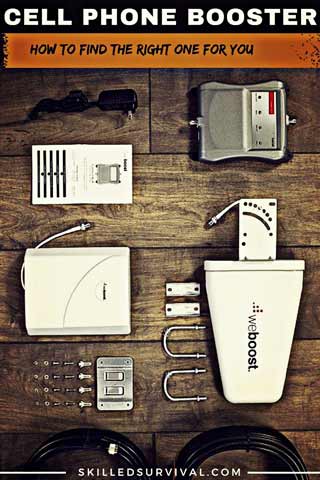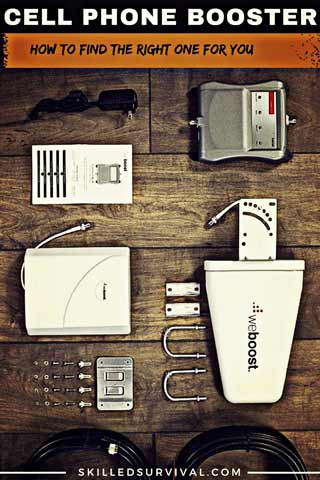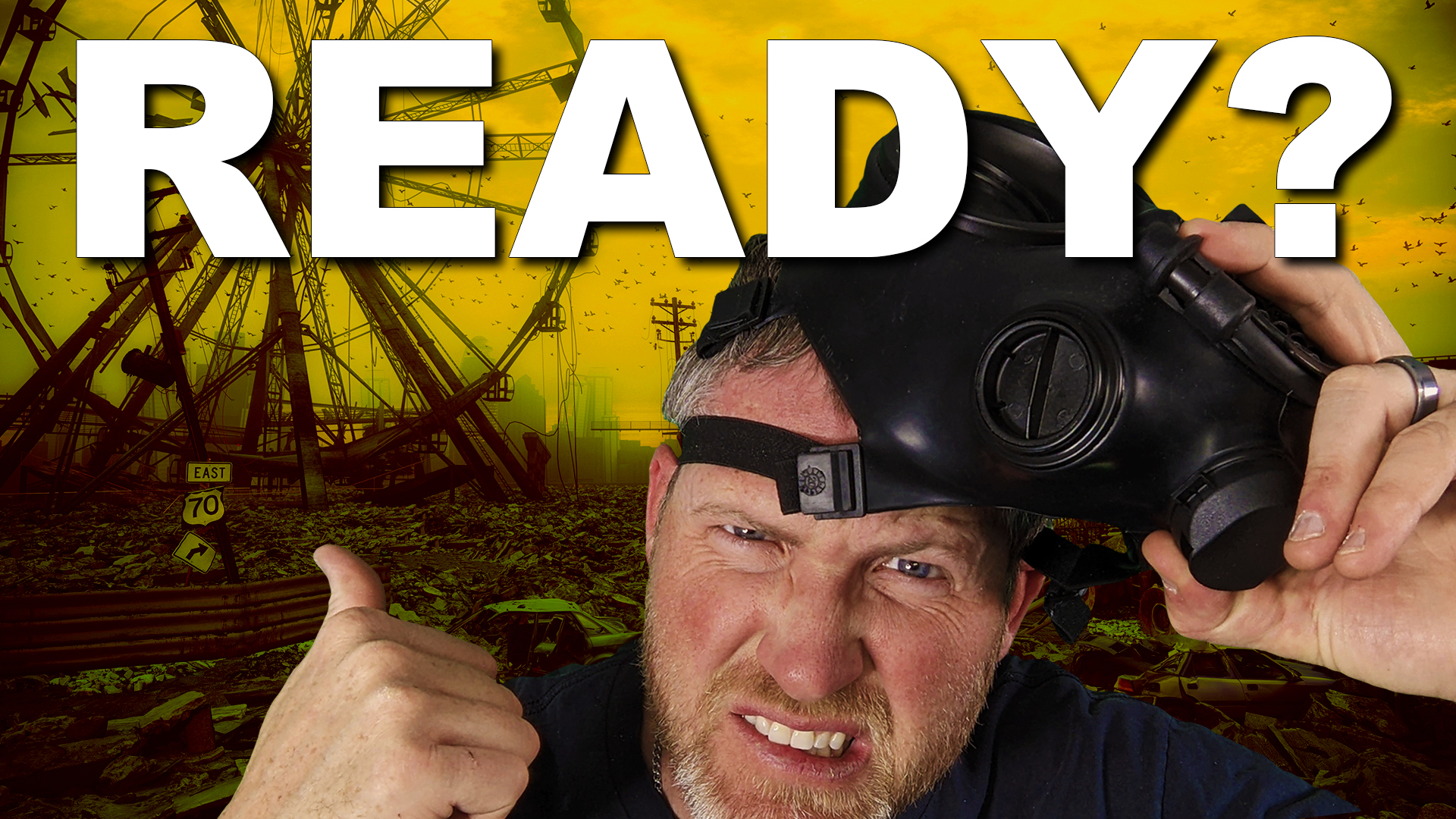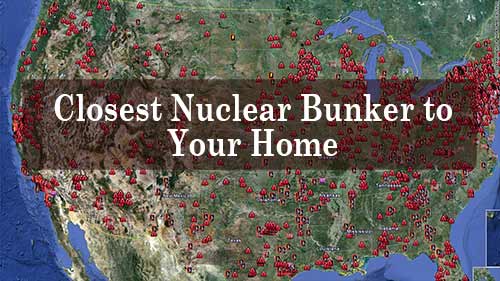
The Problem: Weak Cell Signal – The Solution: Cell Phone Signal Booster
Over the last decade, most of us have become dependent on cell phones.
We use them to make calls.
To send text messages and play games.
We even check our account balances and use them for navigation.
So it’s hardly a surprise that finding yourself with a weak (or no) cell signal has become a modern-day crisis.
And it’s become such a common occurrence it’s made its way into Hollywood lore.
No Signal (and other cellular drama)
It’s become so bad people will perform all sorts of gymnastics tricks to get a tiny bit of signal.
Balancing on tiptoe on the hood of their car or hanging out of a third-story office window to call a friend or get their text message sent.
It’s insane!
From a survival standpoint, cell phones are unreliable for widespread emergency communication. There are better communication options. But cell phones are great for individual local emergencies.
The bottom line is: A weak cell phone signal is a problem you don’t have to live with if you know how to solve it.
So today, we’ll be covering the following topics:
- Why Cell Phone Signals Become Weak
- How To Measure A Cell Signal
- Fixing Cell Signal “Dead Zones”
- How A Cell Phone Signal Booster Works
- Best Cell Phone Signal Booster For Home & Office
- Best Signal Boosters For Cars and Trucks
- Finding The Right Cell Phone Signal Booster For You
- Why YOU Should Invest In A Cell Signal Booster
**Note: If you want our top recommendations, feel free to SKIP AHEAD HERE.
Are You Ready For The Tough Times Ahead? Take My 60 Sec Quiz To See If You’re Part Of ‘The Fragile Masses’ Or Not… Start Quiz Now!
Why Cell Signals Become Weak
There are several factors in cellular strength at any given location.
In rural areas, service providers space their cellular antenna towers further apart. They also upgrade to newer technologies less often due to construction and equipment costs.
Less powerful towers spaced further apart equates to weaker signals.
However, you can still find limited cell signal areas in urban areas with many cell towers called “dead zones.”
For example, my coworker joke that our office must be lined with lead since everyone misses calls frequently deals with dropped calls, and texts won’t go through.
In a sense, they’re not far from the truth!
The materials used in building construction have a significant influence on signal strength.
While cellular technology is commonplace today, the buildings we live and work in were designed before cellular reception was developed.
Brick or concrete walls, poured concrete floors, foil-backed insulation materials, and structural steel all reduce signal strength inside buildings. Even energy-efficient windows and metal window screens filter out some of the signals.
After you add up all these common building features, it’s no wonder you see people standing outside to place a call.
Some locations and some States are worst than others.
Weak Cellular Signal Tips and Tricks
As A Way To Introduce You To Skilled Survival, We’re Giving Away Our #78 Item Complete Prepper Checklist. Click Here To Get Your FREE Copy Of It.
How To Measure A Cell Signal
Now, before spending any time, energy, and dollars on fixing a weak cell signal problem, it’s best to confirm that it’s the weak signal that’s giving you fits.
There could be any number of other issues causing you trouble, so let’s confirm it’s a weak signal first. The best way to do this is to measure the signal strength using your phone.
If you want to measure the signal strength in your area, many smartphones have a “field test mode.” This mode will give you signal strength readings in decibels instead of bars.
Accessing your phone’s field test mode is different for each device. So a quick internet search will help you find how to turn on field test mode.
Here’s how to get to “field test mode” with an iPhone.
iPhone – Hidden Settings For Accurate Signal Strength Numbers
Once you’re in “field test mode,” you must understand how to interpret the readings.
The decibel signal strength is a negative number (though the negative sign is often not displayed).
A more positive number indicates a stronger signal – so a -80dB signal is much stronger than a -90dB signal.
In fact, the decibel scale is logarithmic, so a -80dB signal is 10x the signal strength of a -90dB signal!
Once you’ve proven that lack of cell signal strength is your problem, it’s time to start looking at some solutions.
The Truth About Home Cell Phone Signal Boosters
The Wilson model we tested was one of the highly-ranked boosters available online.
HiBoost also has models with similar specifications and positive reviews.
Others, such as Cisco, have carrier-specific “microcell” boosters. These provide a more streamlined user interface if only one carrier is needed (i.e., all devices are on AT&T).
As A Way To Introduce You To Skilled Survival, We’re Giving Away Our Ultimate Camping Essentials Checklist. Click Here To Get Your FREE Copy Of It.
Best Signal Boosters (Cars/Trucks)
Of course, it’s not only at home and work we run across dead zones.
We all know how quickly a cell signal can drop the further you drive away from an urban environment.
Luckily, smaller versions of these home cellular boosters are available for installation in your car, truck, or RV. This allows you to pull in even the weakest signals on the go.
The components are similar, though the antenna sizes and amplifier power are smaller than home units. This is due to FCC regulations.
weBoost Drive 4G-X Cell Phone Signal Booster For Vehicle
Wilson also recently sent us a test model of their highly-rated WeBoost Drive 4G-X mobile cell phone booster. This mobile booster claims up to a 32dB increase in signal strength. It’s designed with a mini-magnet mount outside antenna, a compact amplifier, and an inside antenna.
Like many home units, it also supports multiple devices on multiple networks.
Also, like the home version, the installation of mobile boosters is straightforward. The hardest hard part was routing the cables cleanly so they were out of sight and secure.
The outside antenna is mounted securely with a magnet base on my car. You may have to be more creative with fiberglass truck canopies or convertibles.
The small coaxial cable from the antenna to the amplifier fits easily through the weather gasket of the rear door. It’s also tucked neatly into the interior trim panels. This allowed me to route the cable all the way to a small cargo hatch in the rear cargo compartment. This is also where I mounted the amplifier.
I ran an extra 12v outlet to the cargo hatch. Then mounted, the inside antenna on the pillar behind the driver’s side door.
This gave me the best boost in signal for the driver. I wish I could have mounted it in a more central location, as I don’t think the passenger side gets as much of a boost.
I already get a strong signal near my house. So I headed out to the coastal mountains to test this mobile cellular technology.
Over the years, I’ve found many trailheads and remote campsites with very little reception. This has often made coordinating trips (and search and rescue activities) more difficult.
While I’ve been on the road the past month or two, I’ve kept the booster turned off until I notice a drop in signal strength.
In most cases, turning on the Drive 4G-X is enough to bring the signal up from a single bar to 3-4 bars on an iPhone.
As long as I wasn’t entirely out of signal range, the booster worked as advertised. It turned a weak, unreliable signal into a dependable one.
It’s a worthwhile device that I like having in my vehicle.
Reviewing the weBoost Drive 4G X Cell Amp Trucker Antenna
Again, I tested the Wilson WeBoost model. However, other manufacturers have similar devices, such as SureCall.
In the mobile market, it appears that carrier-specific boosters are far more common.
This is likely due to the smaller form factor and lower power ratings of mobile boosters. This limitation makes optimizing for multiple carriers a challenge. But, it’s worth noting how often you travel with companions with different carriers.
That’s why the Wilson WeBoost model stands above the rest.
I’m glad to have a multi-carrier booster in my car for its flexibility.
SureCall FusionTrek in-Vehicle Cell Phone Signal Booster Kit
The SureCall FusionTrek booster is certified by the FCC (US) and IC (Canada) for use as a personal cellular booster.
This certification allows it to work on nearly all of the major US carriers (AT&T, Verizon, T-Mobile, and Sprint) and the popular Canadian carriers (Rogers Wireless, Telus Mobility, Bell, and Freedom Mobile).
Installation of the SureCall FusionTrek booster is clean and straightforward, though the bulky antenna in the rear window needs to be mounted securely and out of your field of vision.
While some of the other cell boosters have a smaller antenna unit, they usually have another box of circuitry that has to be mounted under or behind a seat.
In addition, most other cellular boosters require an exterior-mounted antenna, which makes it more complicated to route wiring and find locations for all the components.
The all-in-one antenna design of the SureCall makes it simple to install and easy to transfer to another vehicle if needed.
Once the antenna unit is mounted in the rear window, a single small wire connects to a cell phone cradle that clips to the A/C vent and a 12V power plug.
Again, simple, the non-damaging installation makes it easy to mount the SureCall in nearly any vehicle in minutes, even a rental!
One drawback to the SureCall is that your phone needs to be in the dashboard cradle (or very close to it) to communicate with the cellular booster. This means you’ll need to get much more comfortable with a speakerphone or another hands-free device.
It’s not a deal-breaker for me, but if you’re looking for a booster that allows you to walk around the vehicle, this might not be the best option.
It also means that only one device can take advantage of the signal boost at a time, which might work for your work truck but not for your family camper.
Overall, the SureCall FusionTrek 4G LTE vehicle cellular booster is a good, portable option to extend the range of your cellular device.
It’s easy to manage, simple to install, and works in any vehicle without much hassle.
Dropping your cell phone onto the cradle allows you to make calls, stream music, get driving directions, and check your email, even in remote locations.
SureCall FusionTrek Vehicle Cellular Booster – Unboxing and Review
As A Way To Introduce You To Skilled Survival, We’re Giving Away Our Ultimate Camping Essentials Checklist. Click Here To Get Your FREE Copy Of It.
Best Cell Phone Signal Booster For YOU
At this point, you have enough information to start comparing specific cell phone signal booster models to find the best one for your needs.
Now you need to ask yourself a few questions to hone in on the right one. So it’s worth keeping a few things in mind by asking the following questions:
Do You Need To Support One Device Or Multiple Devices?
Some cell signal boosters are dedicated to single devices, while others are set up to work with multiple.
Single-device cell phone boosters tend to cost less, so it’s important to know if you need to set up multiple networks.
Will Those Devices Be On One Carrier Or Multiple Carriers?
If you only have a single carrier in your home or car, you can use a carrier-specific directional antenna (instead of an omnidirectional one). Otherwise, you’ll need to focus on an omnidirectional option.
Will You Be On The Road Or At Home?
Obviously, if you’re looking for a better signal on the road or at your favorite campsite, you’re looking for a vehicle cell phone booster option.
If your home has some annoying signal dead zones, the home & office options are right for you.
How Much Area Do You Need To Cover (i.e., how big is the dead zone)?
The larger the square footage of the cell boost you need, the more it costs.
If your home is 1,500 square feet, then you don’t need to go all the way up to the 5,000 square feet model. But you may need the larger coverage model if you’re trying to get a signal out to your remote barn.
How Strong Is The Signal Without A Booster?
You can boost a weak signal; a non-existent one cannot.
Use the field test mode on your phone to make sure you can boost a weak signal before you invest in a unit that cannot fix your cell signal problem.
As A Way To Introduce You To Skilled Survival, We’re Giving Away Our #78 Item Complete Prepper Checklist. Click Here To Get Your FREE Copy Of It.
Why Invest In A Cell Signal Booster
Cell phone signal boosters can work well in many remote locations. Places that might be off the grid, where signals are faint but still there.
Maybe you have a survival retreat in the woods and want to use your cell phone. Or maybe you have a bug out vehicle where you want to have the means to communicate while on the move.
So again, cell phones and cell signals are not the best SHTF communication device (Ham survival radios are better), but they are still good for more common emergencies and everyday rescue communication efforts.
Plus, dealing with a weak cell signal is a pain in the “you know what.”
So thankfully, you can do something about it – invest in a high-quality cell phone signal booster!
Jason K.
P.s. Do you know where the closest nuclear bunker is from your home?
There are a lot of natural nuclear shelters in the US that are absolutely free. And one of them is near your home.
Click here to see the Closest Natural Nuclear Bunker to Your Home?
Click on the image above to find out where you need to take shelter.
The post Best Cell Phone Signal Boosters For Remote Locations appeared first on Skilled Survival.







